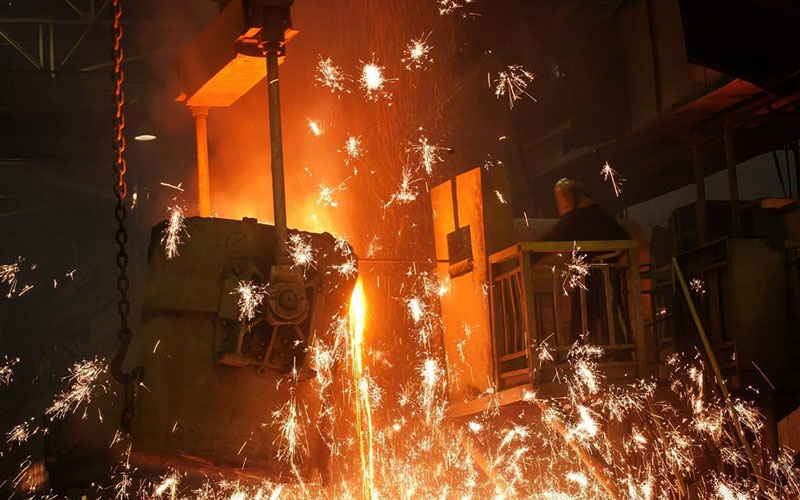Industry News
What Is an Electric Arc Furnace?
Author : Hani Time : 2020/05/28An electric arc furnace, also known as an electric arc furnace (EAF), is a device that uses an electric arc to heat materials that are usually metals to the melting point. A typical electric arc furnace melts a material by passing an electric current through a set of electrodes, or "charge". The combination of the heat generated by the current channel and the arc on the charge surface can melt the material. Electric arc furnaces have been found in research and dental restoration laboratories, cast iron foundries and steel production plants, with internal capacities ranging from a few pounds to 400 tons or more. Electric arc furnaces have several distinct advantages over other types of furnaces.
The electric arc furnace usually consists of a shell with side walls and a dish-shaped bowl at the bottom. A retractable top cover covers the furnace, through which the graphite electrode descends. The bowl-shaped portion of the shell is lined with a layer of refractory material called the hearth. A faucet or nozzle for discharging molten metal is installed on the side of the housing or the bottom of the bowl. The cross-section of the electrode is usually circular and consists of threaded parts. When the electrode burns out, new parts are allowed to be added.
An alternating current (AC) power supply or a direct current (DC) power supply can be used in the electric arc furnace. The operating voltage of electric arc furnaces in ordinary steel plants is 400 volts to 900 volts, the rated voltage is 44,000 amperes or higher, and it is powered by a transformer rated at 60,000,000 volts (60 MVA). This type of electric arc furnace can produce about 80 tons of molten steel per hour. Electric arc furnaces vary in size, from small installations used in research laboratories (which can hold about a pound of charge) to large steel plant facilities that can melt hundreds of tons of material. The largest of these furnaces has a capacity of more than 300 tons and uses a power source of 300 MVA or higher.
The process of arc melting is a very simple process. After the hearth of the furnace is filled with raw materials, lower the electrodes until they touch the charge. The current is then usually applied at a lower voltage to start the process. The current flowing through the charge and the radiant energy generated by the arc can increase the heat in the charge to the extent of melting. After the charge is completely melted, the temperature and chemical composition can be checked by remote probe or spray gun; if everything is correct, the molten metal can be released or poured out.
The raw materials used in the furnace are usually replenished by adding pig iron, quick lime and dolomite. These additives promote the correct chemical balance in molten steel and form a surface slag that will float impurities and insulate the charge. Electric arc furnace installation has more flexibility than other types of furnaces. They can use an exclusive scrap supply, and can change the output according to demand. Electric arc furnaces can also be quickly shut down and restarted, but blast furnaces are not. They have lower installation costs and use less power per ton of finished product.

TAG: electric arc furnace EAF electric arc furnaces blast furnace arc furnace arc furnaces


